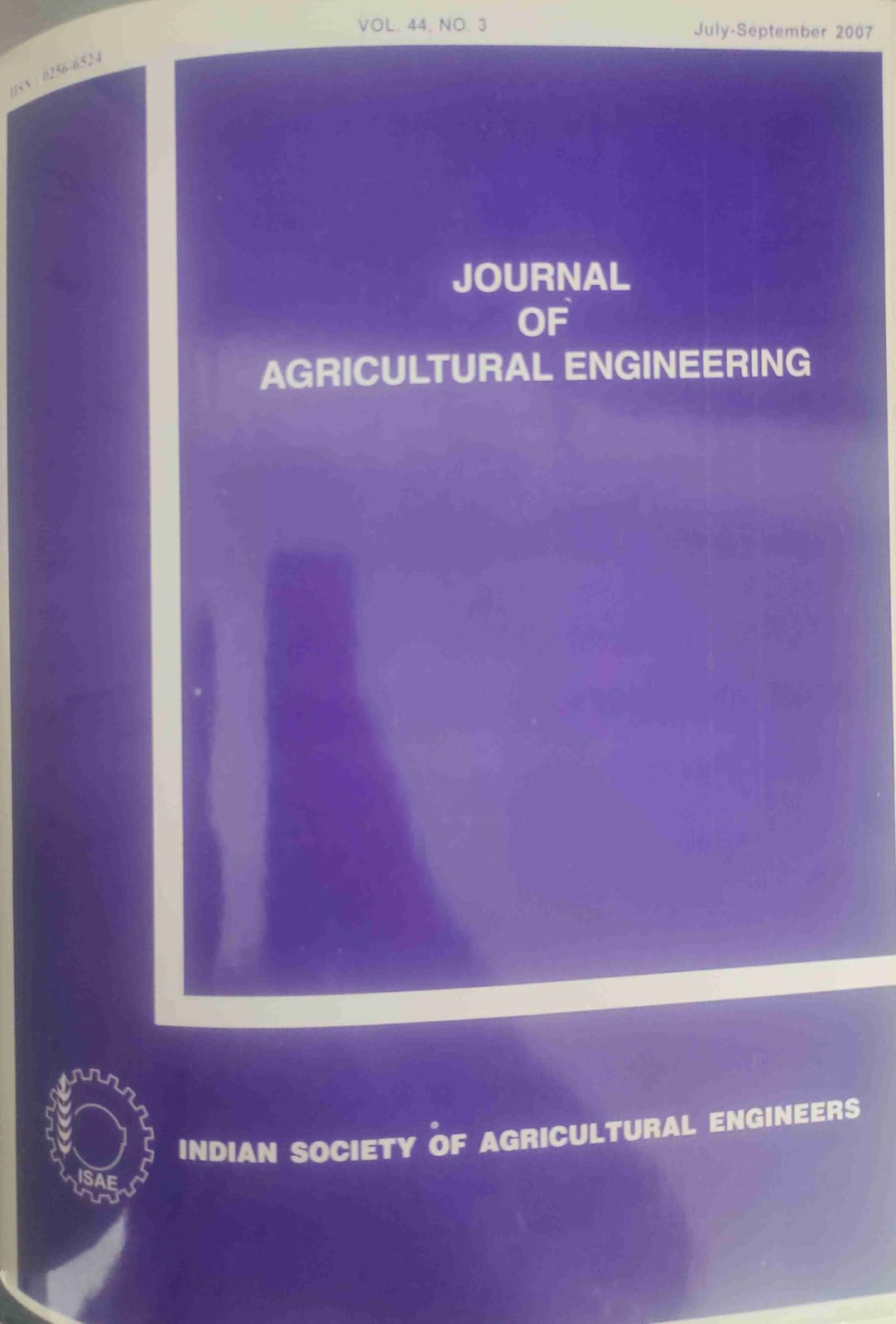Evaluation of Worker Exposure to Airborne Dust in Cotton Ginneries
DOI:
https://doi.org/10.52151/jae2007443.1278Abstract
Airborne dust in cotton ginneries is a nuisance as well as a potential respiratory hazard. The workers in ginneries are subjected to vagaries of airborne dust pollution. Exposure to dust causes cough, cold, fever, breathing difficulties and may even lead to lung disorders if exposed for long term. Dust concentration in mg! m3 of PM 2.5 11m and PM 10 11m was measured at different workstations. Time weighed average (TWA) of airborne dust of PM 2.5 and PM10 was found up to 2.30 and 3.75 mg/m3 respectively in conventional ginneries. In automatic ginneries, workers are exposed to TWA of airborne dust levels of PM 2.5 and PM 10 up to 0.20 and 0.58 mg/m3 , respectively. The workers in all types of ginneries are exposed to dust concentrations above the permissible limits in all workstations. The thoracic dust and respirable dust concentration levels were observed above the permissible limits in all the workstations. Workers employed in automatic ginneries are comparatively less exposed to airborne dust than conventional and semi-automatic ginneries. Workers stationed at press house, pala house and at lint opener are subjected to higher levels of airborne dust.
References
Anderson J 0; Baker R V. 1979. Development of experimental cotton dust analyzer. Trans. ASAE, 918925.
Anonymous. 2002. Comprehensive Catalog and Air sampling Guide. SKC Inc., USA.
Antony W S; Eugene P C. 1983. Control of fine dust from gin extractor-feeders. Trans. ASAE, 1030-1034.
Antony W S; Eugene P C. 1984. Dust related performance characteristics of gin machinery. Trans. ASAE, 956-961.
Eugena P.· 1973. Experimental verification of displacement equations used to predict trajectories of cotton gin emissions. Trans. ASAE, 1126-1133.
http:/www.epa.gov/airs/criteria.html. National Ambient Air Quality Standards (NAAQS)
http:/www;epa.gov/airs/criteria.html. National Ambient Air Quality Standards (NAAQS)
http:/www.osha-slc.gov/pls/os. Fact sheet (Program Highlights) 1995 -Cotton dust.














